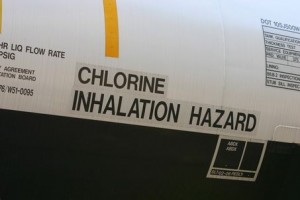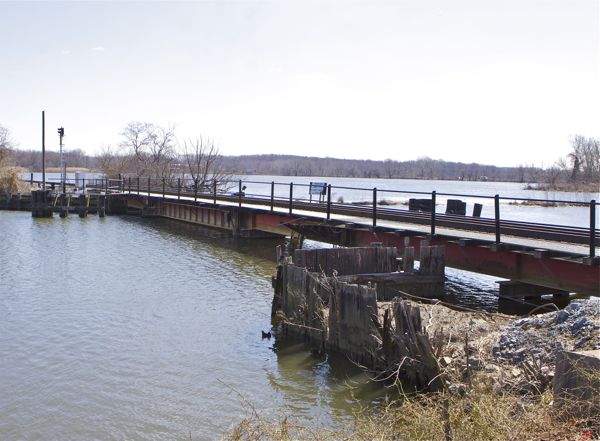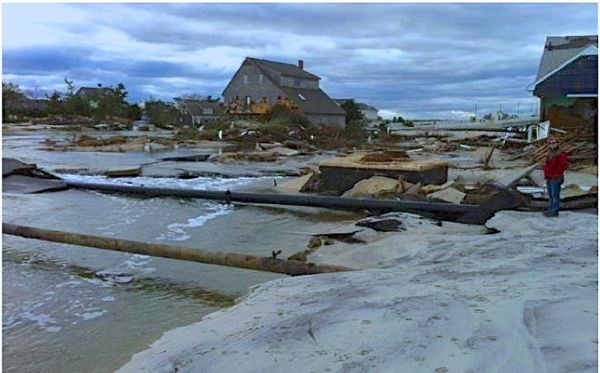South Mountain Reservation Tree Cutting Scheme Improved Slightly
After Criticism, County Agrees to Exceed DEP’s Minimum 2 inch Twig Replacement Size
DEP can’t see the forest for the basal area of the twigs
DEP surely can’t see the park’s history, aesthetics and users’ enjoyment
Olmstead they’re not
[Updates below]
[Note: This post focuses on DEP tree replacement regulations and policies, not the merits of the South Mountain project. And yes, I understand that these rules are “stricter” than the “no net loss” standard]
The State House Commission today heard a DEP proposal (see agenda item #11), acting on behalf of Essex County, to divert public park lands as part of a project in South Mountain Reservation, along a 1.6 mile stretch of South Orange Avenue County Rt. 510 (which bisects the park).
The plan involves cutting down 360 mature trees.
DEP’s Green Acres diversion regulations were applied by a state certified forester for Essex County. DEP approved the forester’s tree replacement calculations for those 360 trees. The replacement plan on the SHC agenda was for 8,500 trees of a 2 inch caliper.
DEP diversion rules require:
i. All reasonable efforts shall be made to preserve trees of significant size (with a DBH of 18 inches or greater), including, but not limited to, if feasible, relocation of infrastructure, roadways and buildings. Removal of trees of significant size (with a DBH of 18 inches or greater) from parkland requires the specific approval of the Department and may require additional compensation;
ii. The plan shall indicate the total number of trees over six inches DBH to be removed, the size and species of each such tree to be removed, and the total number of each species to be removed;
iii. The number of replacement trees to be planted shall be calculated on a square inch by square inch basis; however, the number of replacement trees may include trees required to be planted as a mitigation measure by another Department permitting program for the same project for which the disposal or diversion of parkland is proposed or the substitution of comparable wooded replacement land;
iv. The size of the replacement trees shall not be less than two inch caliper;
v. The plan may take into account the condition of trees which are dead, dying or diseased, and may assert preexisting legal rights pertaining to tree removal (such as tree clearing rights in utility corridors), in proposing replacement trees or monetary compensation for tree replacement;
I don’t know if all reasonable efforts were made to avoid cutting large trees.
I do know that, despite existing regulations that allow DEP to require more compensation when large mature trees are cut, DEP agreed to the minimum requirements and allowed the County to replace those 360 mature trees with 8,500 2 inch trees, not much more than twigs.
I testified to the SHC in opposition to the DEP approved Essex County plan with respect to tree replacement.
I reminded the SHC that this was similar to my prior testimony to the SHC regarding DEP’s sweetheart lease deal with Tennessee Gas Pipeline Co. for gas pipelines across State Parks and forests.
That prior testimony had an impact. It: 1) convinced the SHC to quadruple (4x) DEP’s negotiated lease price and 2) prompted Senator Smith to sponsor legislation (S826, which is stalled) that would revise the way DEP calculates the value of state leases, to better reflect their true market value.
Similar to the way DEP technical appraisal methods and regulations undervalue state lands that Tennessee gas exploited, DEP’s tree replacement methods greatly undervalue trees.
Trees have many positive features and characteristics that are not considered in DEP’s diversion regulations.
[Note; in a rare moment of professionalism, DEP’s testimony, to their credit, specifically acknowledged that I was correct on this criticism.]
In addition, there are locational factors that strongly influence the ecological, historic, aesthetic, visual, recreational, and land use “value” of a tree.
Trees have market and non-market values.
For example, for obvious reasons, a beautiful mature tree in Central Park is “worth” far more than the exact same tree in a Sussex County forest.
But DEP’s tree replacement regulations do not allow those obvious reasons to be considered. They consider only “basal area” and “caliper”.
South Mountain Reservation – an Olmstead brothers design – is a key part of the oldest County Parks Department in the country.
It serves as an urban greenbelt, dividing some of the most densely populated land in the world.
Thousands of people drive through, walk in, see, enjoy, and use South Mountain Reservation every day.
Clearly, DEP minimum 2 inch twig “tree replacement” requirements are totally inadequate for compensating for cutting mature trees in South Mountain Reservation.
After I made these points clear to the SHC, and urged them to respond the same way they did to the Tennessee Gas Pipeline lease giveaway, a forester representing Essex County rose to speak.
He agreed to go beyond DEP’s minimum 2 inch twig requirements and agreed to plant 4 inch trees – at least 6,500 of them. (It was unclear just when this 4 inch 6,500 tree replacement plan arose. It was not the DEP approved plan on the SHC agenda.)
So, this amounts to about a 50% increase over the DEP approved 2 inch twig plan.
Advocates for Essex County Parks and South Mountain reservation need to monitor the County to assure that this agreement is honored.
Based on the County’s testimony, it is not clear that final plans are in place for this tree replacement work. Additionally, the County indicated that the project was federally funded, so the money to honor this pledge may not be 100% federal funded, which may be resisted by the County.
At any rate, we’ll consider this a small victory and a valuable use of a few hours.
We plan on approaching Senator Smith to see if he is interested in a bill to expand DEP’s tree replacement methods and standards with legislative ones to assure that this doesn’t happen again.
This is more of the kind of abuse we see – certified by a state certified forester – on issues related to cutting trees.
DEP can’t see the forest for the basal area of the twigs.
DEP surely can’t see the park and its history and aesthetics and users’ enjoyment – Olmstead they’re not.
I hope the folks at NJ Audubon et al that support the “Forest Stewardship” bill reconsider in light of exactly these kinds of problems.
[End Note – for those interested in Senator Smith’s reform bill, we previously wrote;
Economic Value of State lands – S826
This bill grew out of the debacle over the Tennessee Gas Pipeline lease.
I wrote about this set of issues numerous times:
- DEP Report: Highway Right-of-Way Land 8 Times More Valuable Than State Parks and Forests
- Fair Market Value Leases for Energy Infrastructure Could Fund Parks System
- Christie Cuts Sweetheart Deal with Gas Industry
- NJ Subsidizing Oil and Gas Pipelines That Cross State Lands
- NEW JERSEY PARKS LOSE MILLIONS IN UNCOLLECTED LEASE PAYMENTS – Park Closures Could Be Averted by Reaping Concessionaire and Easement Revenue
According to the bill summary:
- This bill would provide that, when determining the value of
- lands based upon their intended use upon conveyance, the revenue
- generation potential of the land, i.e., how much revenue would be
- generated from the land if the sale, exchange, lease, easement,
- right-of-way, or other similar property interest is granted, would be
- required to be taken into consideration and calculated as part of the
- value of the land, and this amount would be the minimum value that
- may be accepted by the State in exchange for the conveyance of the
- lands, with one exception.
[Update #1 – I am getting some pushback from knowledgeable forestry friends about my characterization of a 2 inch caliper tree as a “twig”. Specifically:
FYI, friend just told me that 2″ caliper trees are about 10-12 years old, 12-14 ft high with a 6 foot canopy, not really a twig. 4″ caliper would be approx 20 feet tall, 12 foot canopy and weigh 1200lbs each – a bear to plant.
I stand by that, in the context of comparison to 100+ year old mature trees that are being cut in an Olmstead designed park.
And none of those details about 2 inch caliper trees takes away from my essential points: the facts that: 1) DEP regulations ignore critically important features and that 2) DEP approved the minimum that their own flawed rules would allow, despite the ability to require more aggressive tree replanting.
or that Essex county agreed to DOUBLE DEP’s minimum 2 inch caliper.
[Update #2 – The Lorax takes liberties with language.
Is it technically accurate to describe a 2 inch caliper young tree as a “twig”?
Of course not. Friends warn me that I destroy the credibility of my criticism by doing that.
But is it an appropriate way to describe them in the context of DEP tree replacements for cutting mature trees in an Olmstead Park? (particularly when DEP’s so called regulatory tree protection standards basically boil down the beauty of a tree to biomass and basal area.)
I think so, or I wouldn’t have used the word. I’m not writing here for an audience of professional foresters or for a scientific journal.
And yes, I know that about 1,500 trees in the Park were blown down by Sandy – far more than will be cut by this project, some of which will be replanted.









